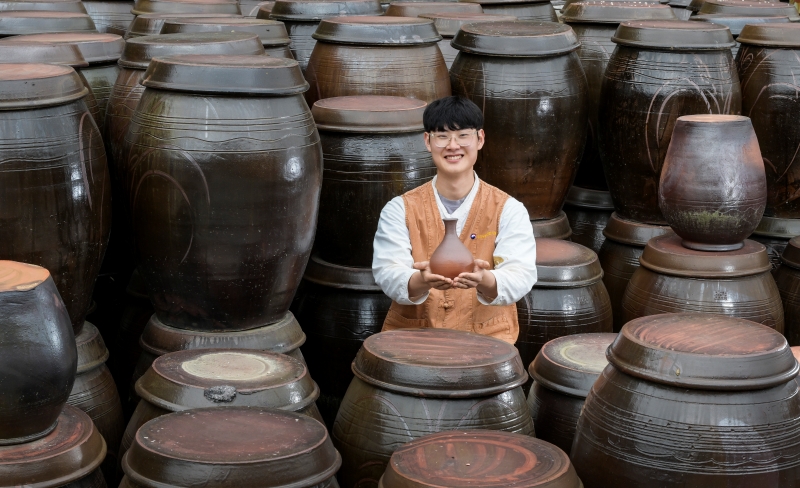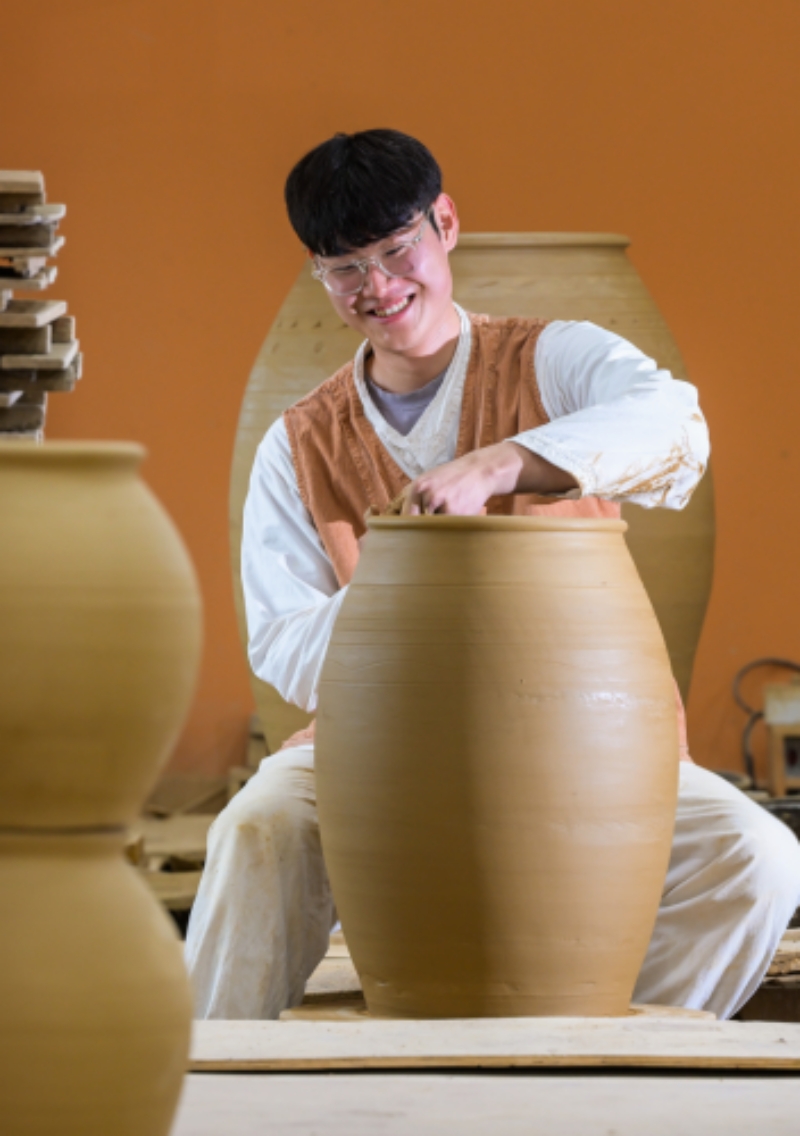- 한국어
- English
- 日本語
- 中文
- العربية
- Español
- Français
- Deutsch
- Pусский
- Tiếng Việt
- Indonesian
By Honorary Reporters Anshika Saxena and Khyati Negi from India
Photos = Kim Hee-geon
Onggi (earthenware jars) have a tradition spanning centuries, with the story behind their creation deeply rooted in Korean history.
Kim Hee-geon, the eighth-generation successor of Obuja Onggia, is an artisan dedicated to preserving the traditional Korean craft of Onggi-making. Based in Yeoju, Gyeonggi-do Province, he continues his family’s legacy by creating Onggi using time-honored techniques. His efforts to promote this cultural heritage, recognized by UNESCO as an element of intangible cultural heritage, extend beyond Korea through demonstrations and workshops held at events such as the Korean Melon Festival, Yeoju Ceramic Festival, and international programs in Spain and Japan.
The following are excerpts from an interview with Kim via email from July 8-18.
Briefly introduce yourself and explain onggi in your own words.
I am the eighth-generation successor in a long line of traditional onggi makers in Korea. I was born in 2002 and received an apprenticeship scholarship for Intangible Cultural Heritage.
Onggi is a form of traditional pottery closely intertwined with Korean food culture for centuries. This humble vessel is something that embodies the everyday life and spirit of Koreans.

Kim Hee-geon
What inspired you to carry on this cultural legacy?
Continuing my family's legacy was a natural path. I lacked a strong sense of purpose at first, but deeper study and international workshops proved to me that I was inheriting an invaluable and living Korean heritage. This sparked a deep sense of responsibility and passion.
Onggi teaches about the broader aspects of traditional Korean life such as jang (fermented sauces), kimchi and the daily lives of our ancestors. I consider it my job to convey its cultural and traditional essence.
What traits do you feel sets onggi apart from other forms of pottery?
Its most distinctive feature is its breathability. Unlike other ceramics, onggi is made with coarse clay that contains fine sand particles, which allows air to pass through microscopic pores. This makes it ideal for fermenting food.

Kim comes from a family with a rich tradition in creating onggi.
How do you stay in shape for the physically demanding task of your craft?
Making onggi is extremely labor intensive, and I have a herniated disc in my back. To maintain the physical strength required, I go to the gym three to four times a week and focus on strength and core stability. I also stretch frequently while working to prevent injury and fatigue. Maintaining physical health is essential for this practice.
How have you interpreted the onggi traditions of your ancestors?
Making onggi has seen a significant evolution across generations. My grandfather's era was about speed and efficiency driven by high demand. My father's time began to explore onggi as art, while the process grew more solitary. My generation's focus is moving toward self-expression and reinterpretation. I see my role as expanding beyond crafting onggi to being an educator, artist and cultural communicator to share onggi globally.
How do you see the future of onggi?
I believe onggi must return to its traditional handcrafted roots of making each vessel entirely by hand with age-old methods. I aim to reinterpret traditional forms to fit the present, turning them into unique works of art.
What are your plans?
Though onggi is no longer used daily in Korea, people are increasingly interested in experiencing it. So I will launch a master class in May 2028 in Korea for foreign participants on this traditional culture and techniques. I will also keep leading workshops abroad to share and raise global awareness of onggi.
msjeon22@korea.kr
*This article is written by a Korea.net Honorary Reporter. Our group of Honorary Reporters are from all around the world, and they share with Korea.net their love and passion for all things Korean.